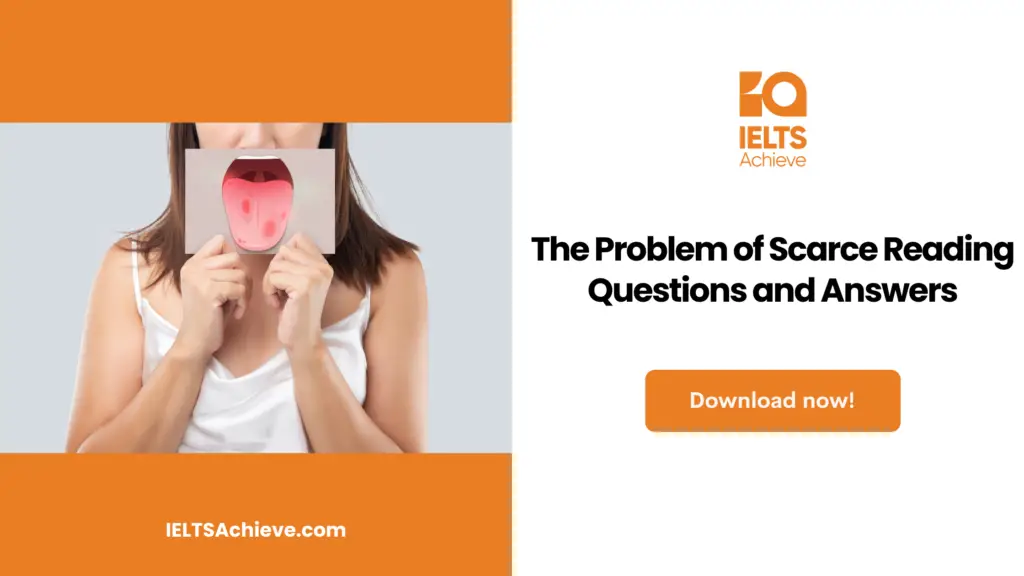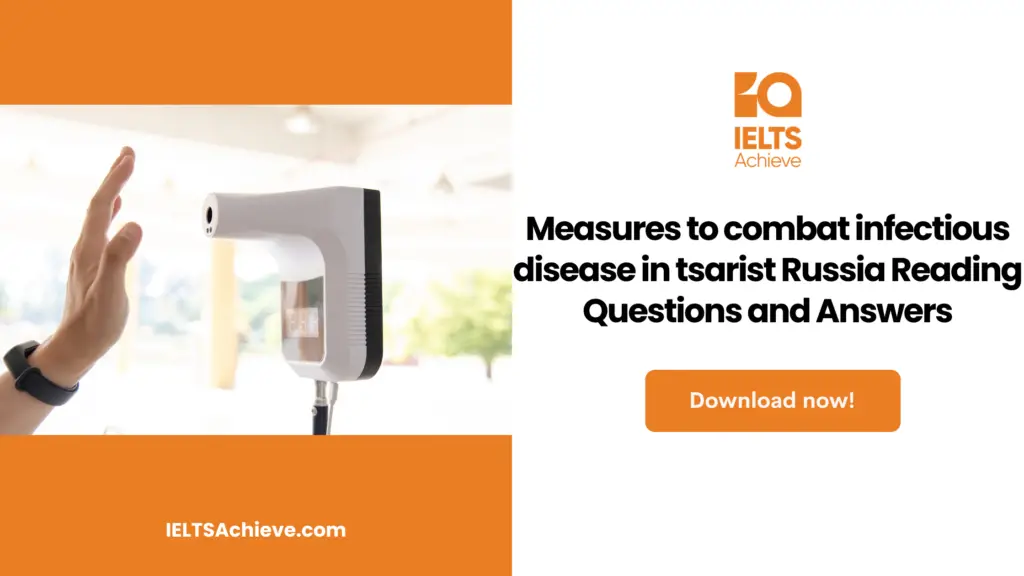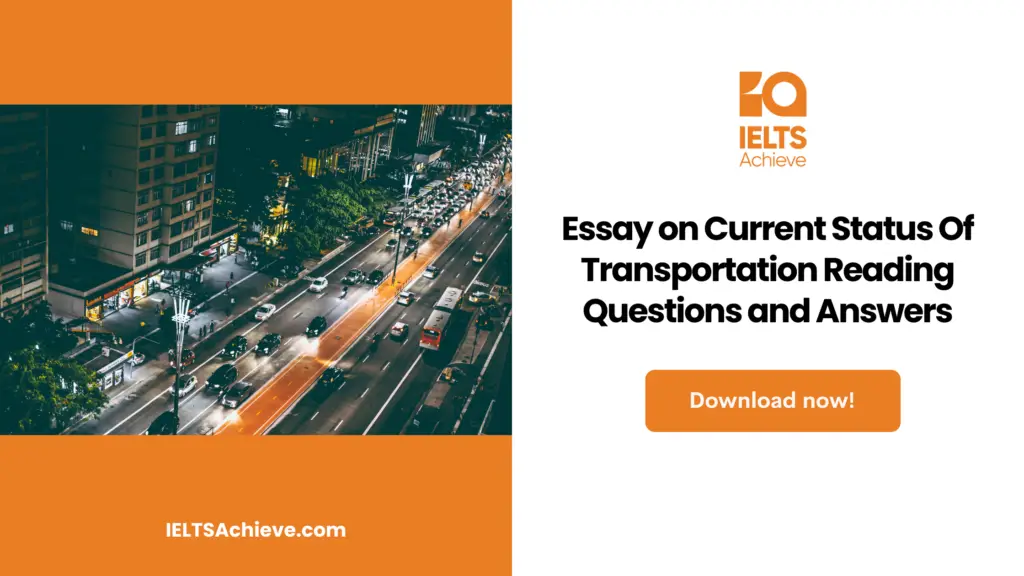The Blog post contains the following IELTS Reading Questions:
- IELTS Reading Matching Headings
- IELTS Reading Locating Information
- IELTS Reading Yes No Not Given
Stay informed and prepared for success – Explore our comprehensive Reading Test Info page to get valuable insights, exam format details, and expert tips for mastering the IELTS Reading section.
IELTS Reading passage – The Problem of Scarce

The Problem of Scarce
The issue of how healthcare resources should be assigned so that they are accomplished in a way that is both equitable and effective is not something new. Every medical system in an economically advanced society must decide (formally or informally) what percentage of the society’s entire assets should be utilised for health care, how resources should be distributed, which diseases and disabilities and which methods of treatment ought to receive priority, what segments of the community should be given special consideration as it pertains to their health needs, and which forms of treatment are most affordable.
What is novel is that, starting in the 1950s, there have been some broad shifts in perspective regarding the finitude of resources in general and of health-care assets specifically, as well as more discrete shifts regarding the clientele for health-care resources and the cost of those resources to the community. As a result, Western nations began to realise in the 1950s and 1960s that there were only a limited number of fossil fuel resources available, and that the environment’s ability to support population growth and economic development was also limited. To put it another way, we saw the obvious truth that there were “limits to expansion.” This universal realisation of the obvious also included the new awareness that there were serious resource limitations for health care. Thinking back, it now seems fairly amazing that the ‘invisible hand’ of economic progress was supposed to care for all of the fundamental health needs of any community in the national health systems that evolved in many nations in the years immediately following World War I (1939–1945).
Knowledge of the opposite kind: people have a fundamental right to health care as a vital condition of a proper human life, was growing in Western cultures simultaneously with a new understanding of the limited nature of healthcare resources was beginning to take hold. Health care has come to be considered as one of the basic social services required for people to exercise their other rights as autonomous human beings, alongside education, political and legal institutions, public order, communication, transportation, and money supply. If a person is poor, lacks access to a basic education, or doesn’t live in an environment where there is law and order, they are not in a position to exercise their right to personal freedom and to make their own decisions. In a similar manner, access to basic healthcare is a requirement for exercising autonomy.
Although the word “rights” can be ambiguous at times, by the late 1970s, most cultures had accepted that people have a right to healthcare (While the notion that there is a formal right to healthcare has faced significant opposition in the United States). It is also acknowledged that the state has a responsibility to make sure that enough health care resources are given with money from the general fund as a result of this right. While the state must make sure that a health care system is in place, it is not required to supply one. In other words, basic healthcare is now recognised as a “public good” as opposed to a “private good” that each individual is supposed to purchase for himself. It was stated in the World Health Organization’s 1976 proclamation that “every human being, without distinction of race, religion, political belief, economic or social position,” has the fundamental right to the “best achievable standard of health.” As was previously mentioned, in a liberal society, having a minimum level of health is regarded as one of the requirements for exercising personal autonomy.
People started demanding that the government fulfil their basic right to health care right as it became clear that resources for providing healthcare could not possibly match the demands being imposed on them. The second set of more specific changes that have contributed to the current concern about the availability of healthcare resources is the sharp increase in healthcare costs in the majority of OECD1 countries, which has been aided by significant social and demographic variations. As one illustration, these modifications have made elderly people crucial (and relatively expensive) consumers of healthcare resources. Hence, the percentage of health costs to GDP in the OECD countries as a whole climbed from 3.8% of GDP 1 2 in 1960 to 7% of GDP in 1980, and it has been forecast that this trend will continue. (The current rate is approximately 12% of GDP in the US and 7.8% of GDP in Australia).As a result, during the 1980s, health administrators, economists, and politicians projected a sort of doomsday scenario (analogous to equivalent doomsday extrapolations about energy requirements and fossil fuels or about rising population). In this case, resources were flat or declining but health care costs were constantly rising.
Unlock your full potential in the IELTS Reading section – Visit our IELTS Reading Practice Question Answer page now!
Recommended Questions:
Renewable Energy IELTS Reading Question with Answer
The Problem of Scarce IELTS Reading Questions
Questions 1-4
Reading Passage is composed of Five sections (A–E). Choose the appropriate heading for sections A-E from the list of headings provided below. Write the appropriate letter from I-VIII in your answer sheet boxes 1-4.
- The connection between healthcare and other human rights.
- The development of a market-based health system.
- The role of the state in healthcare.
- A problem shared every economically developed country
- The impact of recent change.
- The views of the medical establishment.
- The end of an illusion.
- Sustainable economic development.
- Section A
- Section C
- Section D
- Section E
Improve your performance in Matching Features questions by clicking here to access our comprehensive guide. Learn how to match specific features or characteristics with the options provided in the IELTS Reading section.
Questions 5-8
Identify which of the following is the first to occur:
| Between 1945 and 1950 Between 1950 and 1980 After 1980 |
On your answer sheet, complete the boxes 5-8 with the proper letter, A, B, or C.
5. the knowledge that the national health systems’ resources were insufficient.
6. a significant increase in healthcare costs
7. a viewpoint that asserted economic progress will generate all the healthcare services the community would ever need.
8. an acknowledgment of the state’s responsibility in ensuring the supply of healthcare
Questions 9-13
Do the following statements 9-13 support the author’s opinions in the reading passage? On your answer sheet write –
YES if the statement agrees with the information
NO if the statement contradicts the information
NOT GIVEN if there is no information on this
9. Independence and personal freedom have never been seen as being closely related to medical treatment.
10. Around the same time that the limitations of healthcare resources became apparent, health care started to be viewed as a right.
11. Population shifts in OECD nations have recently had an effect on health care expenses.
12. The level of healthcare provision required has continuously been underestimated by OECD governments.
13. The elderly in the majority of economically developed nations will need to make specific arrangements for their health care in the future.
Want to excel in identifying the writer’s views and claims? Click here to explore our in-depth guide on how to accurately determine Yes, No, or Not Given in the IELTS Reading section.
Unlock your full potential in the IELTS Reading section – Visit our IELTS Reading Practice Question Answer page now!
Recommended Questions:
Renewable Energy IELTS Reading Question with Answer
The Problem of Scarce reading answers
1. IV
2. I
3. III
4. V
5. B
6. B
7. A
8. B
9. No
10. Yes
11. Yes
12. Not Given
13. Not Given

We hope you found this post useful in helping you to study for the IELTS Test. If you have any questions please let us know in the comments below or on the Facebook page.
The best way to keep up to date with posts like this is to like us on Facebook, then follow us on Instagram and Pinterest. If you need help preparing for the IELTS Test, join the IELTS Achieve Academy and see how we can assist you to achieve your desired band score. We offer an essay correction service, mock exams and online courses.

